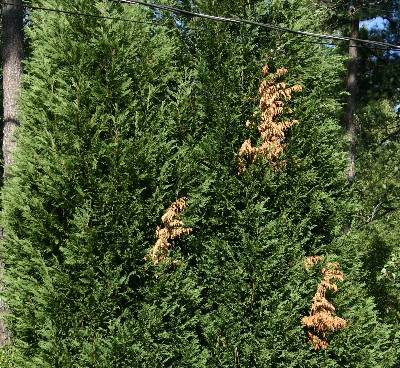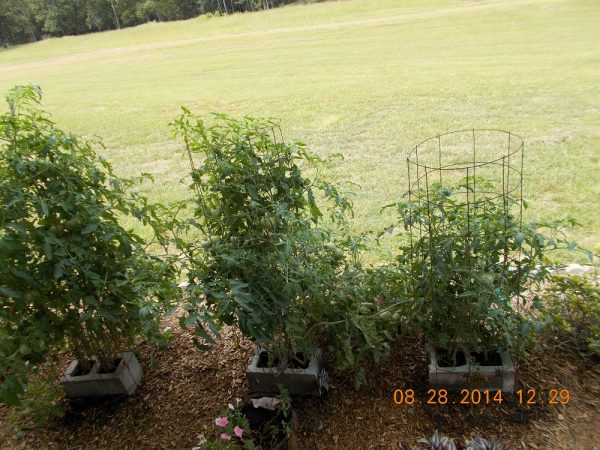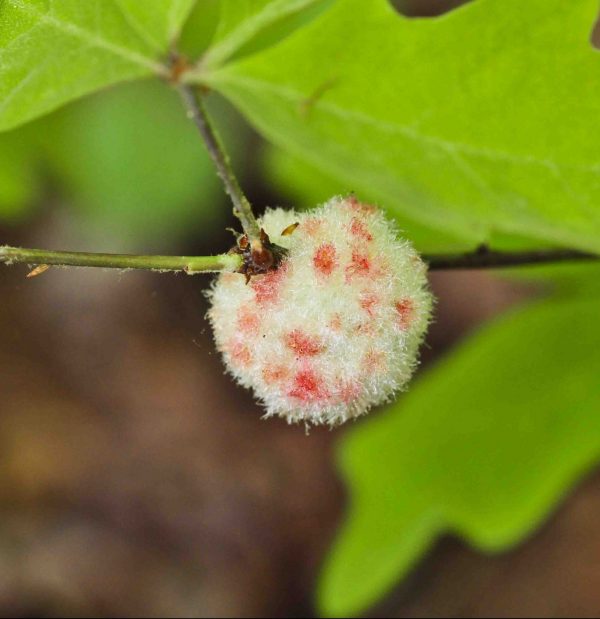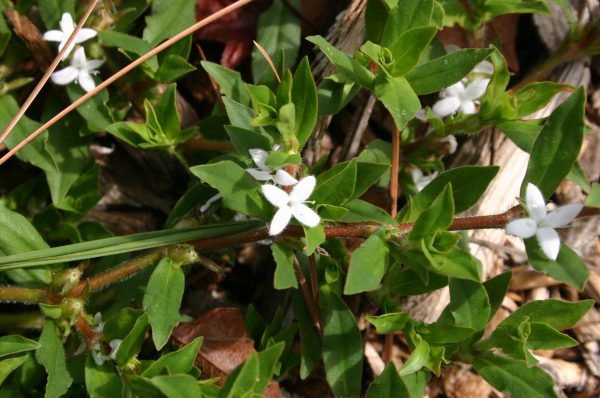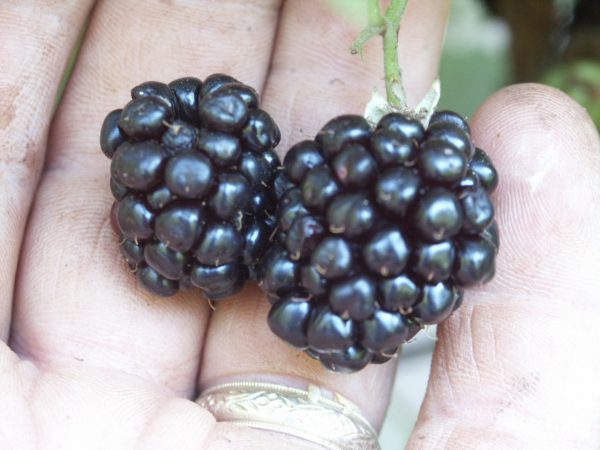Watermelon
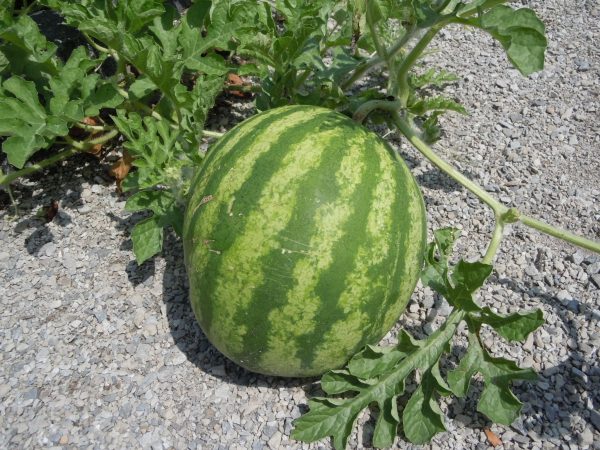
Citrullus linatus
Summertime celebrations would be incomplete without watermelons. Children of all ages love the sweet, juicy fruit of these hot-weather African natives. As is the case with other summer melons, watermelons need a long, hot season to develop.
• More detailed information can be found in The Georgia Fruit & Vegetable Book by Walter Reeves and Felder Rushing
• See also Watermelon Breeding
Watermelons are vine crops closely related to cucumbers, squashes, and pumpkins, and like most vine crops, watermelons can take a lot of room. If you are reluctant to plant them because your garden has restricted space, you can plant smaller-fruited kinds, often called icebox watermelons. These can be grown on trellises if there is adequate support for the fruits so they do not pull down the vines.
WHEN TO PLANT
Do not plant watermelons too early because they cannot stand a frost. They need warm soil to develop and may rot off if weather is cool and wet. Sow seeds indoors under lights about 1 month before the latest date of last frost. Set out started plants or sow seed directly in the garden after any danger of frost has passed.
WHERE TO PLANT
Plant watermelons somewhere with lots of room (they need about 25 to 30 square feet per hill), full sun (8 to 10 hours will suffice), and well-drained soil. If space is restricted, grow bush types in beds or containers, or train the vining types on a trellis, making sure that the structure is strong enough to support the plants. Icebox-type melons can weigh 6 to 12 pounds each, and several may develop on a vine. Standard and seedless melons at 25 pounds or more may be too heavy to grow on a support.
HOW TO PLANT
Apply a complete garden fertilizer, such as 10-10-10, at a rate of 11/2 pounds per 100 square feet of garden. Spade or rototill the soil. (See “Soil Preparation” on page 68.) Because vine crops do not tolerate root injuries common to transplanting, indoors under lights sow seeds in peat pots that can be planted without disturbing the tiny roots. Keep the lights on for 18 out of every 24 hours, and maintain the temperatures during the light period around 80 degrees Fahrenheit. After danger of frost has passed, carefully set 2 or 3 transplant seedlings in hills about 36 inches apart. In beds, space the plants 36 inches apart down the middles of the beds. In containers, plant bush types. Set the plants at the same depth they were growing. Black plastic mulch can get watermelons off to a good start since it traps the sun, warming the soil. Cut holes in the plastic with a small can from which you have cut off the rim. Be careful; it will be sharp. You could use a knife or scissors, but a can cuts the right-sized hole with a single effort. Then plant the seedlings in the holes.
CARE AND MAINTENANCE
From the minute watermelon seedlings are planted, cucumber beetles will threaten them. These pests will damage the leaves and scar the stems. Apply an approved garden insecticide to eliminate the beetles, or cover the plants with floating row covers, being sure to tuck in the edges and ends, to keep the beetles out. When the plants begin to vine, remove the covers, and stop the spraying. In cooler areas, use floating row covers to warm the plants. When flowers appear, remove the covers so that bees may pollinate them. Watermelons, like all vine crops, have both male and female flowers. The male flowers usually appear first and are smaller than the females. Many times new gardeners are dismayed that the flowers fall off without any melons. Usually, that happens because the flowers are all males. Female flowers have tiny melons below the flowers themselves; male flowers have only slender stems. The flowers are pollinated by bees that feed on the male flowers and then on the females, carrying the pollen from one to the other. Without bees, there will be no melons. If the weather is unfavorable for bees (that is, cold, wet, or dark), pollinate the melons by hand. Clip a male flower and dust the pollen from it on the pistils of the female flowers. Protect the foliage from diseases by applying a garden fungicide. Rotate vine crops to a different part of the garden each year to reduce dangers of diseases.
ADDITIONAL INFORMATION
In a garden with restricted space, grow melons vertically on a trellis or on a fence. Make sure the supports are sturdy enough to bear the weight of the plants with fruits on them. The heavy fruits will need additional support to keep from pulling the vines down. Use a little net or cloth parachute under each melon, tied securely to the support. Harvest watermelons when they are ripe. That sounds logical, doesn’t it? But determining just when watermelons are ready to pick can be an art. Many gardeners rely on thumping. They are listening for a dull thud, but some melons make that sound when they are overripe. The most reliable way is to check the color of the bottom where the melon is lying on the ground. It should be a good yellow color, and the little curlicue where the melon attaches to the stem dries up as the melon ripens. The skin becomes dull looking, rough, and hardened sufficiently that you cannot cut into it with your fingernail. Melons do not continue to ripen once they are picked. They will become softer, but not sweeter.
VARIETIES
Watermelons vary in size from the small, 6-pound icebox types to giants of 100 pounds or more. For most gardeners, the smaller, early types offer the greatest chance of success; they mature in 70 to 75 days. Bush types are especially well suited to home gardens. Standard varieties take more room and produce fewer fruits in smaller gardens, and the season may be too short in the more northern parts of the area. Standard varieties mature in 85 to 90 days. You must plant seedless varieties with normal-seeded types for pollination. Mark these plants in the garden so the ones with seeds can be separated from the ones that are seedless. Seedless melons mature in 85 days. Most watermelons are red, but types with yellow flesh are gaining popularity.
Varieties
Size
Comments
Early:
Bush Sugar Baby
6 to 8 pounds
Bush type.
Golden Crown
6 to 10 pounds
Red flesh, but skin turns yellow as melon ripens.
Sugar Baby
6 to 8 pounds
Red flesh. Favorite icebox type.
Yellow Baby
6 to 10 pounds
Yellow flesh, the first of the popular yellow varieties.
Yellow Doll
6 to 10 pounds
Yellow flesh, hybrid.
Seedless:
Cotton Candy
20 pounds
Red flesh, large, seedless.
Honey Heart
10 pounds
Yellow flesh, convenient size.
Jack of Hearts
11 pounds
Red flesh, similar to King and Queen, but the smallest of the group.
King of Hearts
18 pounds
Red flesh, largest of the Hearts.
Queen of Hearts
15 pounds
Red flesh, mid-sized Heart.
Standard:
Charleston Grey
25 pounds
Red flesh, popular with commercial growers
Crimson Sweet
25-40 pounds
Red flesh, for larger gardens.
Sweet Favorite
20-35 pounds
Red flesh, smaller and sweeter.
Jubilee
25-40 pounds
Bright red flesh
Stone Mountain
35-40 pounds
Rich scarlet flesh, crisp and sweet



